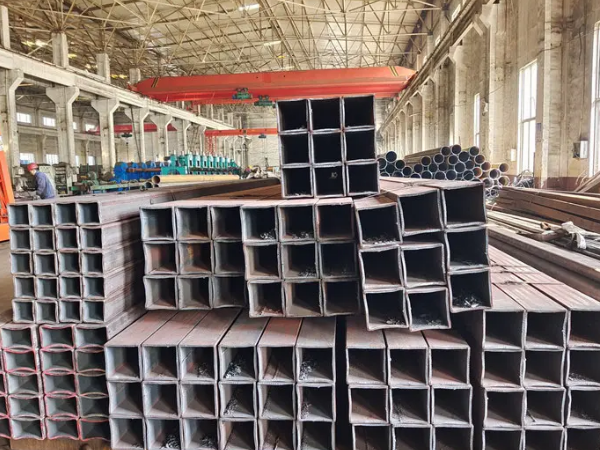Forming Method of Square Tube
Date:2022-05-11View:1954Tags:Square Tube, Forming Method
The way of forming a round tube is called bending, and the way of forming a square tube is called bending. There are 2 basic methods for bending and forming: solid bending and empty bending.
1. Real bend
Real bending, as the name implies, is to compact the bending, and the inner and outer rollers and the inner and outer walls of the tube blank are compacted in both directions during the real bending.
1) The advantages of solid bending are that the rebound is small, the forming is accurate, and as long as the roll shape is accurate, the R of the inner corner forming is relatively accurate.
2) The disadvantage of solid bending is the stretching/thinning effect. On the one hand, it is because the solid bending will stretch the bend, and the stretching effect will shorten the longitudinal length of the bending line; on the other hand, the metal at the solid bending will become thinner due to stretching.

2. Empty bend
Empty bending is to bend the strip material through the one-way contact between the outer roller and the outer wall of the tube blank, and the empty bending will compress the bending line. This is the compression/thickening effect of an empty bend.
1) The advantage of empty bending is that side length bending can be performed when solid bending cannot be performed, such as simultaneous bending and finishing of the upper/side edges of a square tube. The empty bend can also bend the inner angle of R<0.2t without breaking the pipe wall.
2) The disadvantage of empty bending is that when the square tube is synchronously empty bending on the upper side/side, due to the pressure generated by the upper and lower rollers at the same time, the forming force is easy to exceed the critical point, causing the edge to be unstable and concave, and it will also affect the stable operation of the unit and molding quality. This is also the different characteristics of square tubes and round tubes when they are formed by hollow bending.
In practical applications, these two basic methods should be configured to a reasonable process position according to the needs of the product in the forming of the square tube. Pay attention to the influence of the stretching/thinning effect of solid bending and the compression/thickening effect of hollow bending on product quality, otherwise it will cause the side of the square tube to be concave, the finished tube will warp longitudinally, and it will be difficult to straighten .
The square tube is rolled from strip steel through process treatment. Generally, the strip is unpacked, flattened, coiled, welded to form a round tube, and then rolled into a square tube from the round tube and then cut to the required length. According to its production standards, it is divided into national standard square tube, Japanese standard square tube, British standard square tube, American standard square tube, European standard square tube, and non-standard square tube. Widely used in machinery manufacturing, construction, metallurgical industry, agricultural vehicles, agricultural greenhouses, automobile industry, railways, highway guardrails, container skeletons, furniture, decoration and steel structure fields.

